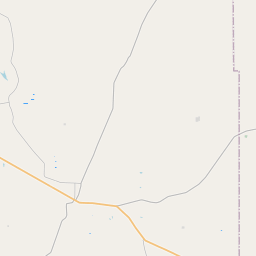Public Swimming Pool and Hospital
Historical marker location:
Fullerton, Louisiana
( Marker can be reached from Fullerton Lake Road, 0.3 miles west of State Highway 399, on the right when traveling west.)







© OpenStreetMap contributors
Loading...
Searching for other points of interest within 3 miles of this location.Louisiana was a slave state before the American Civil War, and the state played a significant role in the Civil War. The Battle of Port Hudson, which took place in Louisiana in 1863, was the longest siege in American history.
About Vernon Parish
Vernon Parish Timeline
Vernon Parish is located in central Louisiana and has a rich history that spans several centuries. The area was originally inhabited by Native American tribes, including the Coushatta and Choctaw, who utilized the abundant natural resources for hunting and fishing.
In the early 19th century, European settlers began to arrive in the area, primarily of French and Spanish descent. The land was purchased from the Choctaw tribe in the 1805 Treaty of Fort Adams, which opened up the region for settlement. The parish itself was established in 1871 and named after Mount Vernon, the home of George Washington.
Vernon Parish played a significant role during the Civil War as a strategic location for both Union and Confederate forces. The Battle of Pleasant Hill, one of the largest battles fought in Louisiana, took place in 1864, leaving a lasting impact on the landscape and local communities.
Over the years, the economy of Vernon Parish has evolved. Timber became a prominent industry, with numerous sawmills operating in the area. The establishment of the Fort Polk military base in 1941 brought economic growth to the region and transformed Vernon Parish into a bustling community.
Today, Vernon Parish is a vibrant and diverse area that celebrates its history while looking towards the future. The parish boasts a strong sense of community and offers various recreational opportunities, such as hiking, fishing, and exploring the Kisatchie National Forest. With a rich historical background and thriving present, Vernon Parish continues to be a place of significance in Louisiana.
In the early 19th century, European settlers began to arrive in the area, primarily of French and Spanish descent. The land was purchased from the Choctaw tribe in the 1805 Treaty of Fort Adams, which opened up the region for settlement. The parish itself was established in 1871 and named after Mount Vernon, the home of George Washington.
Vernon Parish played a significant role during the Civil War as a strategic location for both Union and Confederate forces. The Battle of Pleasant Hill, one of the largest battles fought in Louisiana, took place in 1864, leaving a lasting impact on the landscape and local communities.
Over the years, the economy of Vernon Parish has evolved. Timber became a prominent industry, with numerous sawmills operating in the area. The establishment of the Fort Polk military base in 1941 brought economic growth to the region and transformed Vernon Parish into a bustling community.
Today, Vernon Parish is a vibrant and diverse area that celebrates its history while looking towards the future. The parish boasts a strong sense of community and offers various recreational opportunities, such as hiking, fishing, and exploring the Kisatchie National Forest. With a rich historical background and thriving present, Vernon Parish continues to be a place of significance in Louisiana.
Vernon Parish Timeline
This timeline provides a condensed summary of the historical journey of Vernon Parish, Louisiana.
- Prehistoric times - Native American tribes, including the Attakapas, Coahuiltecans, and Caddo, inhabit the area that will later become Vernon Parish
- 1804 - The United States acquires the territory of Louisiana through the Louisiana Purchase
- 1818 - Santa Ana, later the president of Mexico, is captured in Vernon Parish during the Sabine Expedition
- 1843 - The region becomes part of the newly established Calcasieu Parish
- 1871 - Vernon Parish is created from portions of Calcasieu, Rapides, and Sabine Parishes
- 1902 - Leesville becomes the parish seat of Vernon Parish
- 1908 - Construction of the Kansas City Southern Railway through Vernon Parish boosts trade and population growth
- 1939-1945 - Fort Polk is established as a training camp during World War II, bringing economic development and population growth to the area
- 1962 - The United States Army declares Fort Polk as a permanent military installation
- 1993 - The JRTC (Joint Readiness Training Center) is established at Fort Polk, further solidifying its military importance